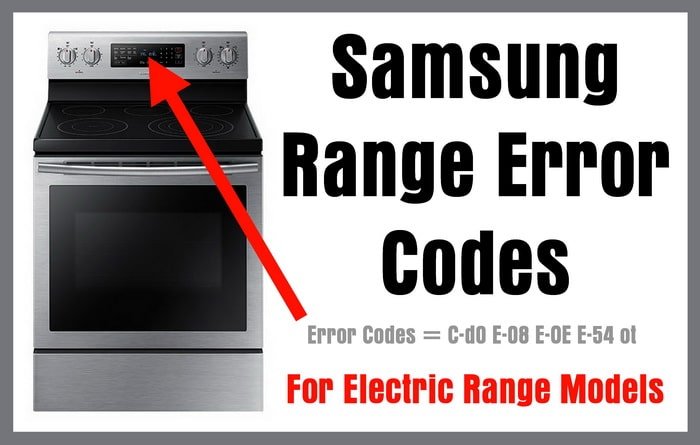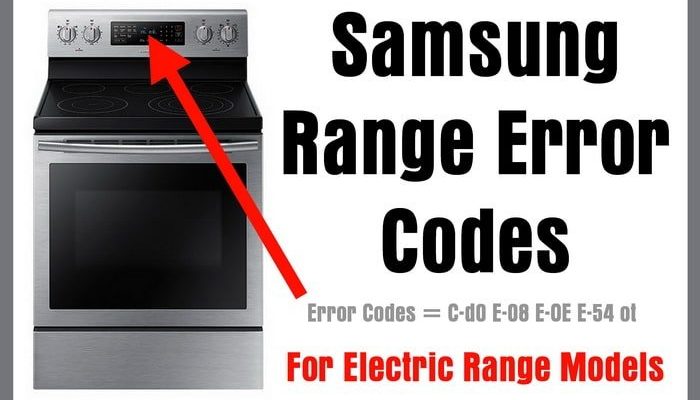
So, here’s the deal. Error codes are like your oven’s way of sending you a text message saying, “Hey, there’s a problem here.” Specifically, Error Code E1 on Samsung ovens and ranges is often related to a temperature sensor issue. But what’s a temperature sensor, you ask? Think of it as the thermometer inside your oven that ensures everything is cooking at just the right heat. If this sensor misbehaves, it might not just ruin dinner, but could potentially indicate a bigger safety concern. Before you jump to conclusions, let’s delve into what this means and what steps you should take next.
Understanding Error Code E1 on Samsung Ovens
To put it simply, an Error Code E1 is a signal that something’s off with the oven’s temperature sensor. This sensor acts as the oven’s eyes and ears, constantly checking to see if the heat is just right. If it malfunctions, the oven can’t effectively regulate temperatures—this is like trying to cook with a blindfold on. You wouldn’t want to guess your way through such a precise task, and neither does your oven.
But why does this happen? Well, the temperature sensor can get worn out over time or may be damaged due to various reasons. Think of it like your favorite pair of shoes. After miles of walking, they might not perform as well as they used to. The same goes for this little sensor after years of heating up and cooling down. Sometimes, it’s just a loose connection or a small electrical glitch. Other times, it could be a sign that the sensor has reached the end of its lifecycle.
Now, this might seem like a call for panic, but it’s not necessarily dangerous immediately. Such malfunctions usually don’t lead to fires or explosions, but they can cause uneven cooking. Imagine baking a cake where one half is perfect and the other half is still batter. Annoying, right? If the sensor is off, your oven might not know when to stop heating, which could overcook or burn your food, but the worst-case scenario is generally limited to poor meal outcomes rather than hazardous conditions.
Is It Safe to Use Your Oven with Error Code E1?
You might be wondering, “Can I still use my oven if I see this error?” Well, the short answer is—it depends. If you notice an E1 error, first try to restart your oven. Just like with computers, a simple restart can sometimes resolve glitches. Turn the oven off, wait a few minutes, then turn it back on to see if the error persists. If it doesn’t reappear, you might be in the clear.
However, if the code remains, usage becomes a bit of a gamble. Using the oven with an unresolved E1 code means you’re relying on an unreliable temperature sensor. You might end up with a nice roast, or you might end up with a meal that’s raw or burnt. It’s a bit like gambling with the stove—sometimes you win, sometimes you lose. The safer route, however, is to pause and address the issue.
Keep in mind, persisting with a faulty sensor can eventually lead to more serious issues. Remember, the E1 code is a cry for help from your oven. Ignoring this call might worsen the problem, potentially leading to more expensive repairs down the line. If you’re getting this code consistently, it’s wise to consult a professional who can accurately diagnose and fix the issue.
Steps to Address Error Code E1
So, you’ve decided not to risk it—what next? First, look at the user manual for your Samsung oven or range. It might offer some troubleshooting tips specific to your model. Often, manufacturers include step-by-step guides for minor troubleshooting that can save you the hassle and expense of a service call.
If you’re feeling adventurous, you can try checking the sensor yourself. Usually, it involves opening the oven and making sure all connections are in place. It’s like checking to make sure your headphones are plugged in properly when the sound is off. But remember, safety first! Always ensure the oven is unplugged before you start poking around.
When in doubt, call in a professional technician. You would call an expert to fix your car—do the same with your oven. They’ll have the tools and know-how to identify whether the sensor simply needs a rewire or a full replacement. This not only resolves the immediate concern but can extend the life of your appliance, keeping you cooking safely and efficiently for years to come.
In conclusion, while an Error Code E1 is not immediately dangerous, it’s a sign that your oven needs attention. By taking the right steps, you can ensure that your kitchen remains a safe and happy place for all your cooking adventures.
